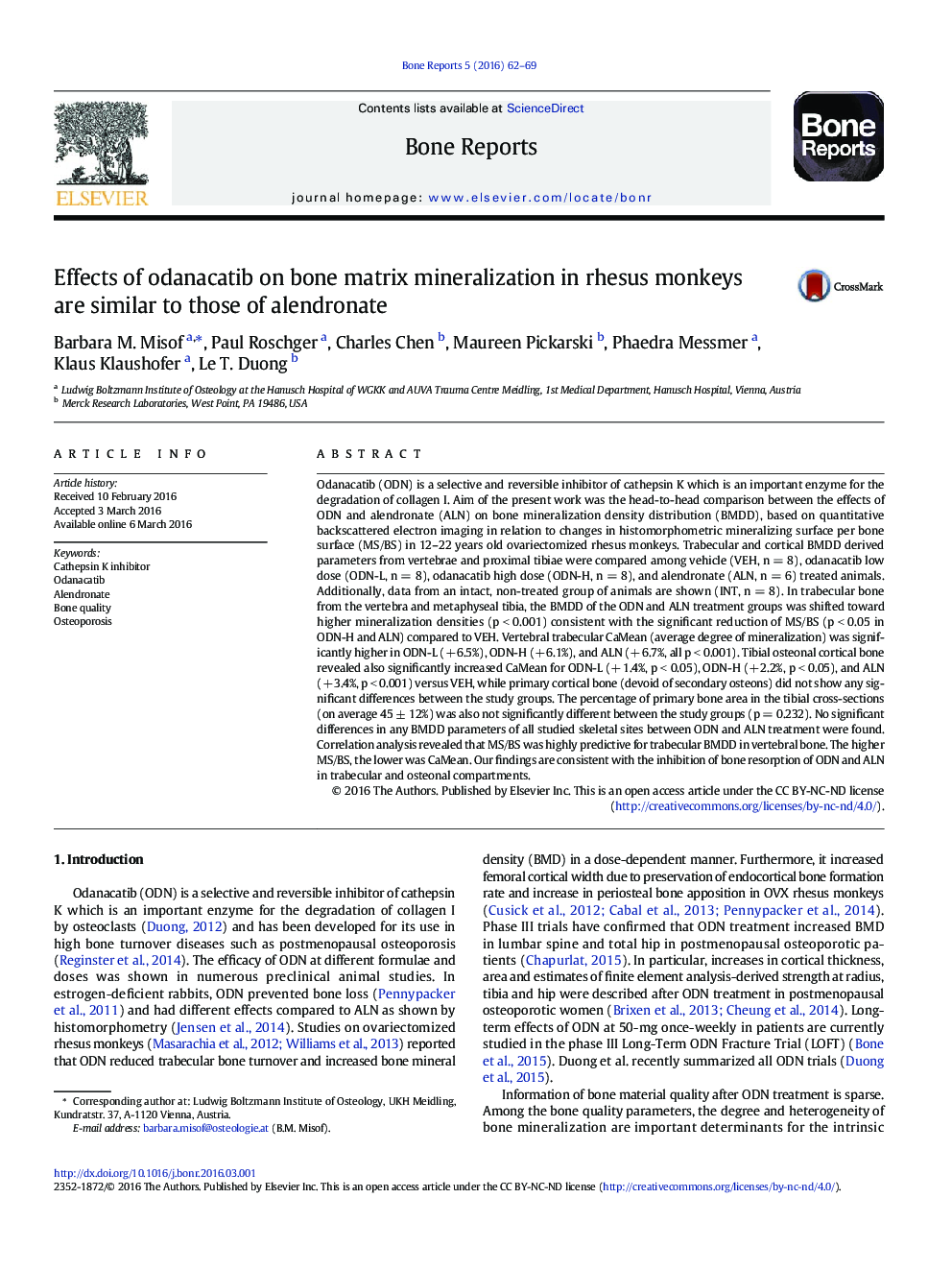| کد مقاله | کد نشریه | سال انتشار | مقاله انگلیسی | نسخه تمام متن |
|---|---|---|---|---|
| 2792302 | 1568667 | 2016 | 8 صفحه PDF | دانلود رایگان |

• In line with its anti-resorptive action ODN increased trabecular and osteonal bone mineralization in treated rhesus monkeys.
• Both lower and higher dosages of ODN were similarly efficient with respect to bone matrix mineralization outcomes.
• ODN treatment affected bone matrix mineralization in a similar manner compared to ALN.
• ODN treatment did not significantly change the percentage of primary bone area in tibial cross-sections.
Odanacatib (ODN) is a selective and reversible inhibitor of cathepsin K which is an important enzyme for the degradation of collagen I. Aim of the present work was the head-to-head comparison between the effects of ODN and alendronate (ALN) on bone mineralization density distribution (BMDD), based on quantitative backscattered electron imaging in relation to changes in histomorphometric mineralizing surface per bone surface (MS/BS) in 12–22 years old ovariectomized rhesus monkeys. Trabecular and cortical BMDD derived parameters from vertebrae and proximal tibiae were compared among vehicle (VEH, n = 8), odanacatib low dose (ODN-L, n = 8), odanacatib high dose (ODN-H, n = 8), and alendronate (ALN, n = 6) treated animals. Additionally, data from an intact, non-treated group of animals are shown (INT, n = 8). In trabecular bone from the vertebra and metaphyseal tibia, the BMDD of the ODN and ALN treatment groups was shifted toward higher mineralization densities (p < 0.001) consistent with the significant reduction of MS/BS (p < 0.05 in ODN-H and ALN) compared to VEH. Vertebral trabecular CaMean (average degree of mineralization) was significantly higher in ODN-L (+ 6.5%), ODN-H (+ 6.1%), and ALN (+ 6.7%, all p < 0.001). Tibial osteonal cortical bone revealed also significantly increased CaMean for ODN-L (+ 1.4%, p < 0.05), ODN-H (+ 2.2%, p < 0.05), and ALN (+ 3.4%, p < 0.001) versus VEH, while primary cortical bone (devoid of secondary osteons) did not show any significant differences between the study groups. The percentage of primary bone area in the tibial cross-sections (on average 45 ± 12%) was also not significantly different between the study groups (p = 0.232). No significant differences in any BMDD parameters of all studied skeletal sites between ODN and ALN treatment were found. Correlation analysis revealed that MS/BS was highly predictive for trabecular BMDD in vertebral bone. The higher MS/BS, the lower was CaMean. Our findings are consistent with the inhibition of bone resorption of ODN and ALN in trabecular and osteonal compartments.
Journal: Bone Reports - Volume 5, December 2016, Pages 62–69